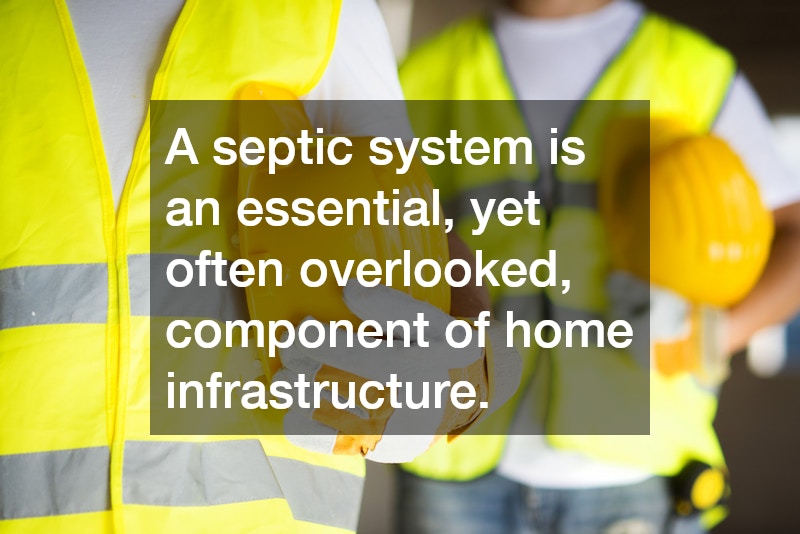Disclaimer: Benro Properties. This site provides home improvement content for informational purposes only.
A septic system is an essential, yet often overlooked, component of home infrastructure. It serves as an on-site wastewater treatment structure, converting waste from the household into effluent. The system comprises a septic tank and a drain field, working together to manage waste efficiently.
Septic systems are mainly found in rural areas not connected to centralized sewer systems. Homeowners who are planning a septic installation should understand the types of systems available. Each system type has unique components and maintenance needs, impacting the overall functioning of the household’s waste management.
In general, septic systems rely on natural processes to treat and disperse sewage from the home. Bacteria in the septic tank break down solids, while liquids flow into a drain field for further purification. Understanding this basic process can help homeowners manage system maintenance and troubleshoot minor issues independently.
Types of Septic Systems
There are several types of septic systems to consider, including conventional, alternative, and advanced treatment units. The choice of system typically depends on factors like soil type, household size, and available space. Conventional systems are the most common, featuring a simple design with tanks and trenches.
Alternative systems, like mound systems and aerobic treatment units, cater to more challenging site conditions. These systems often require more advanced technology and regular monitoring to function properly. They are ideal for areas with high water tables, poor soil composition, or limited space for a conventional system.
Advanced treatment units offer even greater levels of wastewater purification. These systems are especially necessary in environmentally sensitive areas. Though more expensive to install, they offer superior wastewater treatment, reducing potential environmental impacts.
Septic Installation Process
Installing a septic system involves careful planning and adherence to local regulations. The installation process typically begins with a site evaluation, conducted by a certified professional. This evaluation assists in determining the suitable type and placement of the septic system on the property.
Once a system is selected, the next step involves designing the system layout and securing necessary permits. The installation process must comply with specific government and environmental standards to prevent contamination. A proper septic installation not only ensures efficiency but also prolongs the lifespan of the system.
The actual installation phase involves excavation, tank and drain field placement, and connection to the household plumbing. Professional installers use specialized equipment to ensure the entire process is executed seamlessly. Ensuring that all components are correctly installed is crucial in preventing future maintenance issues.
Maintaining Your Septic System
Regular maintenance is critical to ensure the longevity and efficiency of your septic system. Homeowners should schedule professional inspections and pumping every three to five years. These routine checks help identify potential problems before they become costly repairs.
In addition to professional maintenance, homeowners should also practice daily habits to care for their systems. Avoid flushing non-biodegradable substances and excessive chemical agents down the toilet or drains. These materials can disrupt the natural bacterial balance essential for decomposing waste.
Proper landscaping around the septic area also prevents damage to the system. Avoid planting trees or shrubs with deep roots nearby as they can invade and damage pipes. Regularly diverting rainwater runoff away from the drain field can also preserve the functionality of the system.
Environmental Considerations
A well-maintained septic system is environmentally friendly, filtering and purifying wastewater before releasing it back into the ground. Proper care helps protect local water sources and reduces the risk of contamination. Understanding the environmental impact of your septic system can motivate homeowners to prioritize maintenance.
During a septic installation, consideration of the surrounding ecosystem is essential. Placement of the system should avoid proximity to water bodies and environmentally sensitive areas. Regulatory bodies often have specific guidelines to protect these areas, and compliance is fundamental for environmental safety.
Technology advancements in septic systems have led to more environmentally considerate options. Some modern systems reduce water usage and improve waste treatment efficiency. Homeowners can explore these options to minimize their ecological footprint while ensuring home sanitation needs are met.
.

